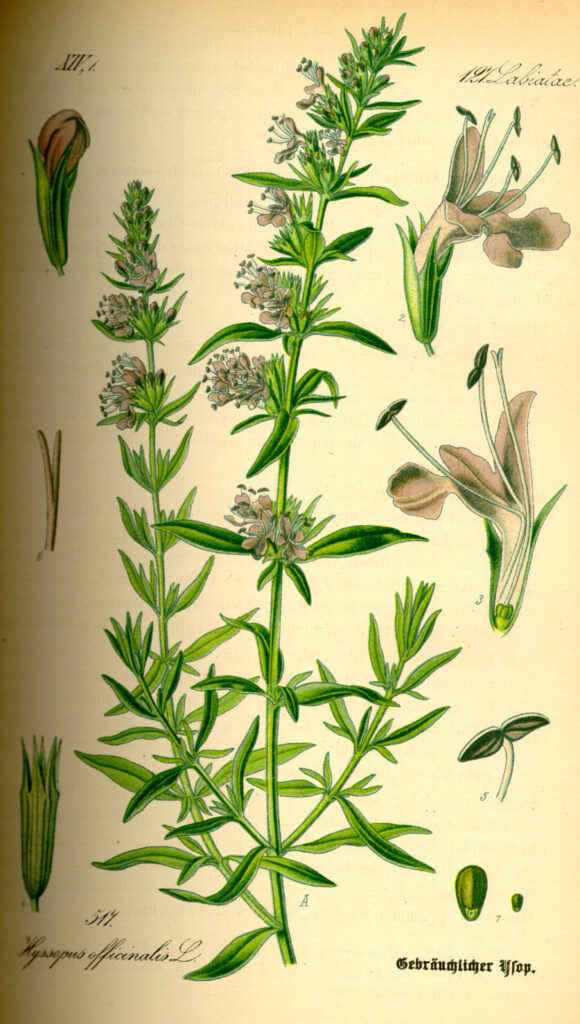Growing cultures outdoors, containers (sow direct in final pots, or in plugs and later transplant to final pots), and hydroponics.
There are between approximately 900 and 1,000 hyssop seeds per gram.
Alternative growing media are soilless potting mixes (Pro-Mix, Sunshine Mix, etc.), perlite, vermiculite, rockwool, coco peat, Oasis Root cubes.
Hyssop will grow indoors satisfactorily under standard fluorescent lamps, and exceptionally well under high output T5 fluorescent grow lights, compact fluorescent, or high intensity discharge (metal halide or high pressure sodium) plant growing lights.
Keep standard fluorescent lamps between 2 and 4 inches from the tops of the plants, high output
and compact fluorescents approximately one foot above the plants, and HID lights between 2 and 4
feet above the plants, depending on wattage. Have an oscillating fan gently stir seedlings for at least
2 hours per day to stimulate a more compact, and sturdier plant habit.
Hyssop (especially lavender hyssop) already confuses many buyers because when they google it,
they see pictures of a plant that from a distance, looks like the more familiar Lavender plant.
Whereas hyssop can be grown easily from seed, lavender seeds often need cold stratification to
germinate, and can be difficult to start for beginners. If your “lavender” seedlings have wide serrated
leaves, and look like weedy lemon balm or mint plants, they are probably hyssop. The leaves when
crushed, release a weedy, mildly minty fragrance.
Anise hyssop is not a true hyssop. It’s a member of the mint family and has similar qualities.
Rock hyssop is a cultivar of common hyssop. The big difference is that its much lower-growing.
Yellow giant hyssop is a scentless cultivar variety that is tall and produces yellow flower spikes.
Korean hyssop, sometimes referred to as Korean mint, is similar to anise hyssop.
Mexican giant hyssop grows over three feet tall.






